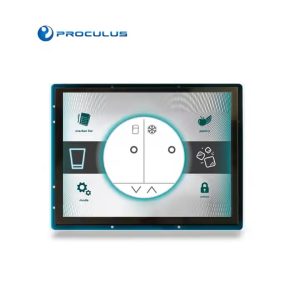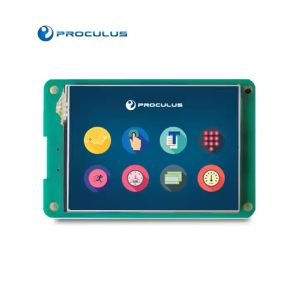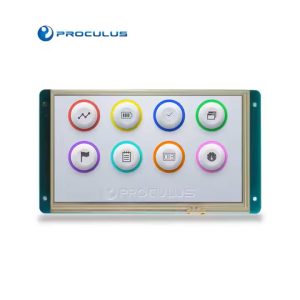Interface Design: What is It and What Are Its Main Rules

It is very wrong to see design only as the area of those who draw a lot and are creative.
The design area has several ramifications: packaging design, for example, which takes care of product protection; graphic design, which is responsible for creating visual pieces and many others.
Interface design, also known as UI Design, is one of these modalities and is usually developed in virtual environments.
To better understand the concept, a didactic comparison: you can say that the interface designer is like an “interior designer”, only within the internet.
It will develop and assist in the functionality of websites and applications, enabling a useful and pleasant user experience.
Also read: Graphical User Interface: what it is and how to implement it.
What is UI Design?
Interface design is responsible for building a dialogue between the virtual environment and the user.
This dialogue, remembering, goes beyond “beautifying” the space, but makes it as functional as possible so that the user does not feel lost inside the space, but rather comfortable to navigate with tranquility and safety.
How important is interface design?
When you feel comfortable in a virtual environment, you are much more likely to spend more time browsing and exploring it, right?
This is how the distance is minimized and the relationship between user and product (or interface or system as well) becomes closer.
A good design gives you the opportunity to perform all desired actions or queries in an efficient and simple way.
Having a qualified interface design means facilitating user interaction, favoring the experience as a whole and also being able to retain those who use the platform.
It also means that no person who accesses a given portal will have doubts about its operation or feel insecure, acting in favor of a good relationship between person and ‘machine’.
What are the most important rules of interface design?
A computer scientist and professor at the Human-Computer Interaction Laboratory at the University of Maryland named Ben Shneiderman has been researching for years the best ways to interact between humans and machines.
The American wrote in his book “Designing the User Interface: Strategies for Effective Human-Computer Interaction” eight fundamental rules when developing an interface efficient.
It became a kind of guide when it came time to start developing a platform’s interface.
We have listed below the essential rules of interface design by using LCD display serial interface.
Consistency
When we talk about consistency, it means that when thinking about a layout project, it is important to consider that the more intuitive it is, the better the experience for those who access it.
For this, it is recommended to use icons, menus, hierarchies, colors, the famous “call-to-action” and similar usage flows in similar situations is fundamental in building a quality interface.
With similar forms of interaction, the user will immediately feel an ease in using the platform, creating an intuitive connection with the steps to be taken during access, optimizing their experience.

Reply user
Shneiderman says that creating an interface is “developing a means by which a dialogue will take place between a user and another user or a machine”.
Thus, it is important to provide feedback on actions to the user as he explores the platform.
In other words, the user needs to know where he is, what is happening and where he will be directed with a certain action.
For example, within a content with twenty pages, it must be clear to the user the total number of pages and at what point he is reading.
Show how to fix the error
Who likes to have their mistake pointed out? Not a lot of people, is it? It is also not a very appreciated practice in a virtual environment.
Shneiderman’s list points out that it is ideal for the interface to have mechanisms that minimize the chance of error as much as possible.
The suggestion is that, when committed, they can be fixed in a simple way, such as suggesting another filling in an incorrectly filled data field, for example.
Focus on the main action
To provide a good experience, the user needs to feel that they have complete control over their actions.
The environment changes must happen as he expects them to happen, almost naturally.
Thus, instinctively, those who navigate feel that they are in an ‘easy to move’ and reliable space.
Use of shortcuts
With increasing usage comes the demand for faster methods of completing tasks.
One of the suggestions is to include copy and paste buttons, so that as the user becomes more experienced, they can navigate and operate the interface faster and more effortlessly.
Inform the closing of a cycle
Don’t let users doubt whether or not their actions have been completed.
Allow those who browse to understand that their action has an end and is complete, avoiding doubts and communication problems during the interaction.
The biggest example can be taken from e-commerce: it is extremely important to inform when a purchase has been completed, as it removes the user’s insecurity about payment and data problems.
Reversal of shares
When developing an interface, it is extremely important to give users ways to reverse their actions.
These rollbacks must be allowed at various points, whether they occur after a single action, an input of data, or an entire sequence of actions.
“This feature alleviates anxiety, as the user knows that mistakes can be undone; thus, it encourages the exploration of unknown options,” says Shneiderman in his book.
Reduced short memory load
We know that human attention spans are limited, and according to experts, we are only able to hold about five items in our short-term memory at a time.
Therefore, interfaces should be as simple as possible, with proper information hierarchy and choosing recognition over retrieval.
Recognizing something is always easier than remembering because recognition involves noticing clues that help us tap into our vast memory and allow relevant information to emerge.
The less storage space in memory and the more actions guided by intuition, the better the experience offered and the easier the interaction.

The role of the UI designer
The interface designer is the professional who will build and enable the best user-platform experience and it is their role to follow the basic rules of UI Design in the development of a project.
All the navigation logic and the platform structure project are in charge of this professional and it is he who allows the user to have a reliable, safe and simplified navigation.
To ensure optimal project development, you can rely on smart tools. Discover the uart tft lcd P.Box kit and its infinite possibilities!
Conclusion
Interface design is a very important area for design and it deals with points that bring the user closer to the platform, creating a relationship close to comfort.
Whether an experience is going to be good or not for the user, the interface will tell.
Be sure to offer the best possibility to the public, count on wholesale tft lcd display supplier Proculus, absolute specialist in displays!

 English
English


